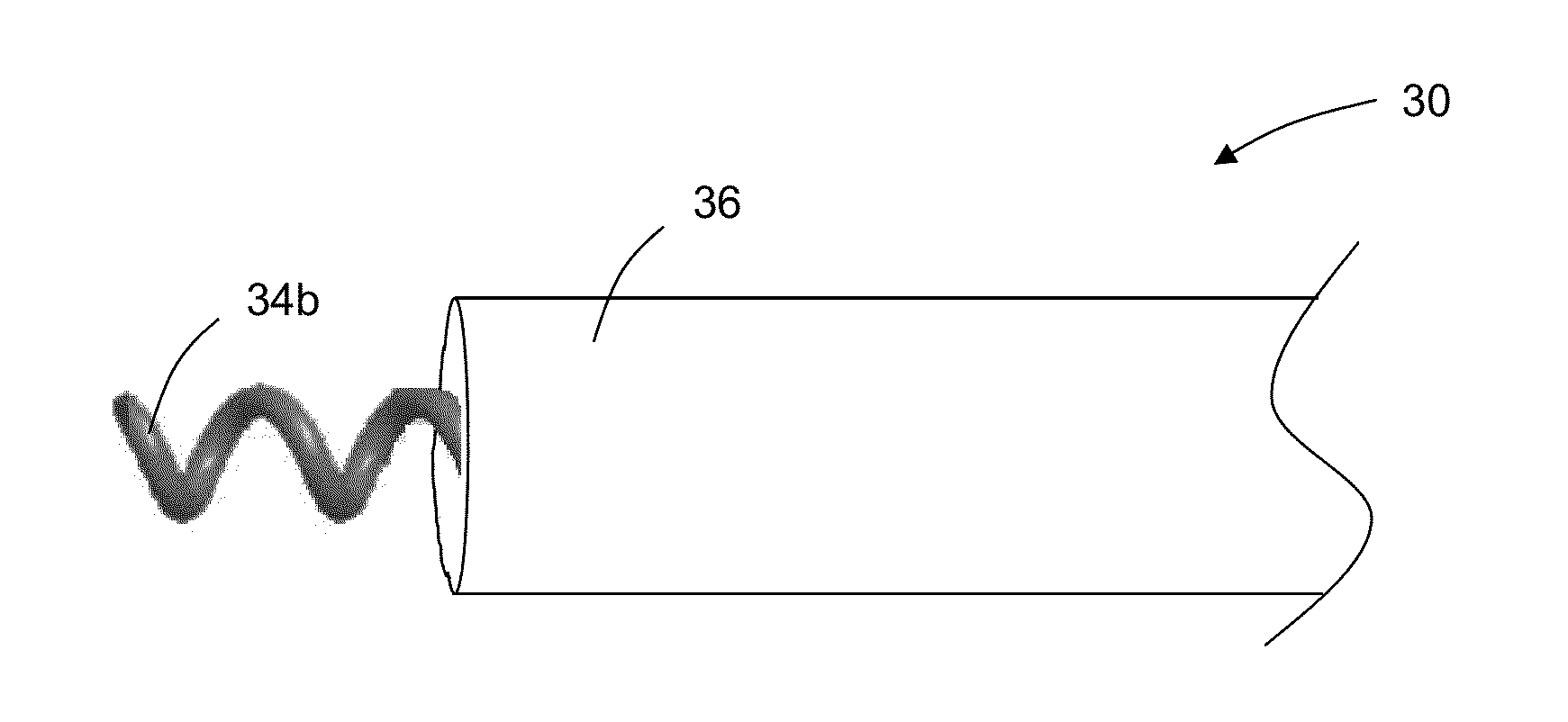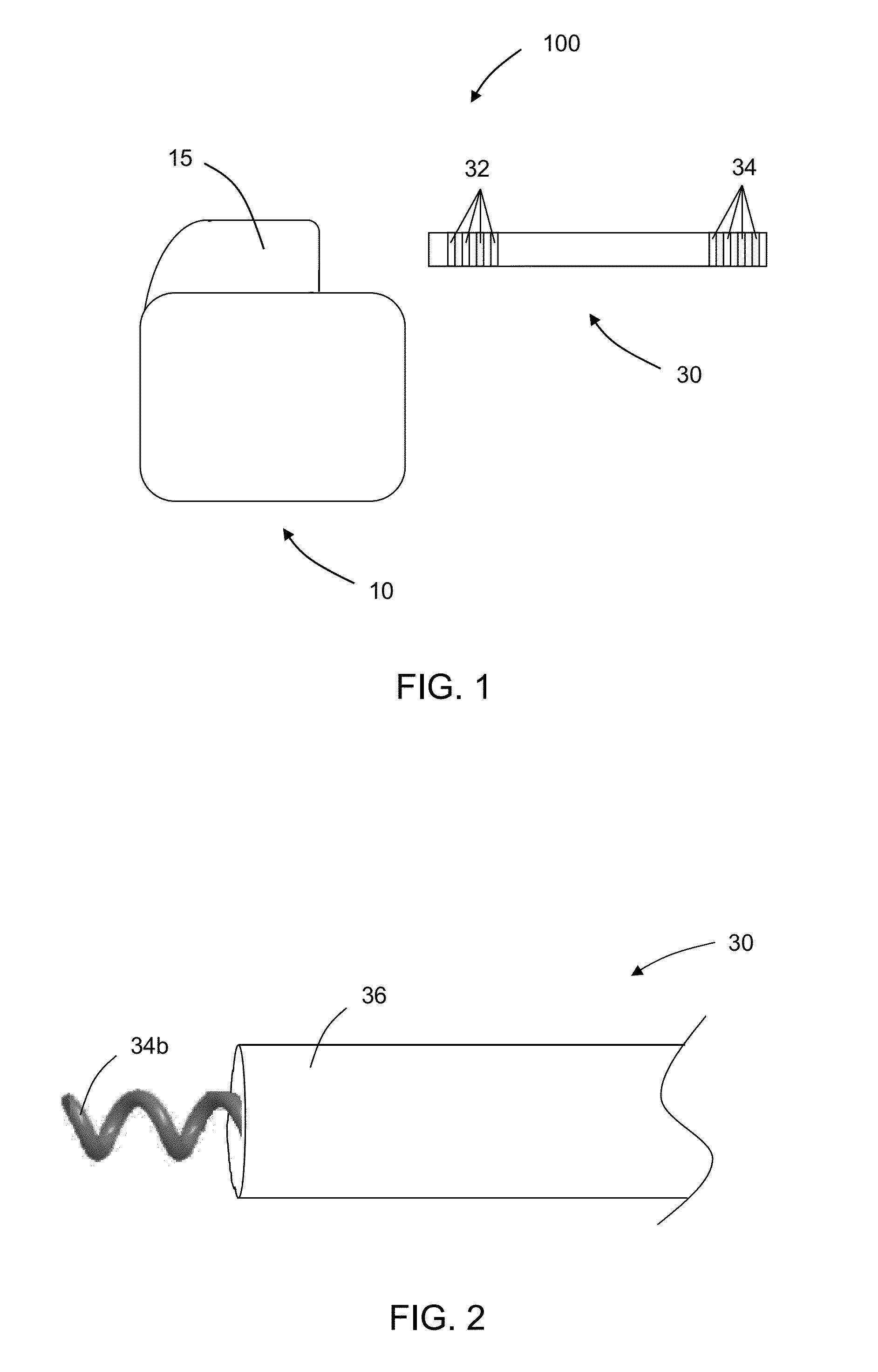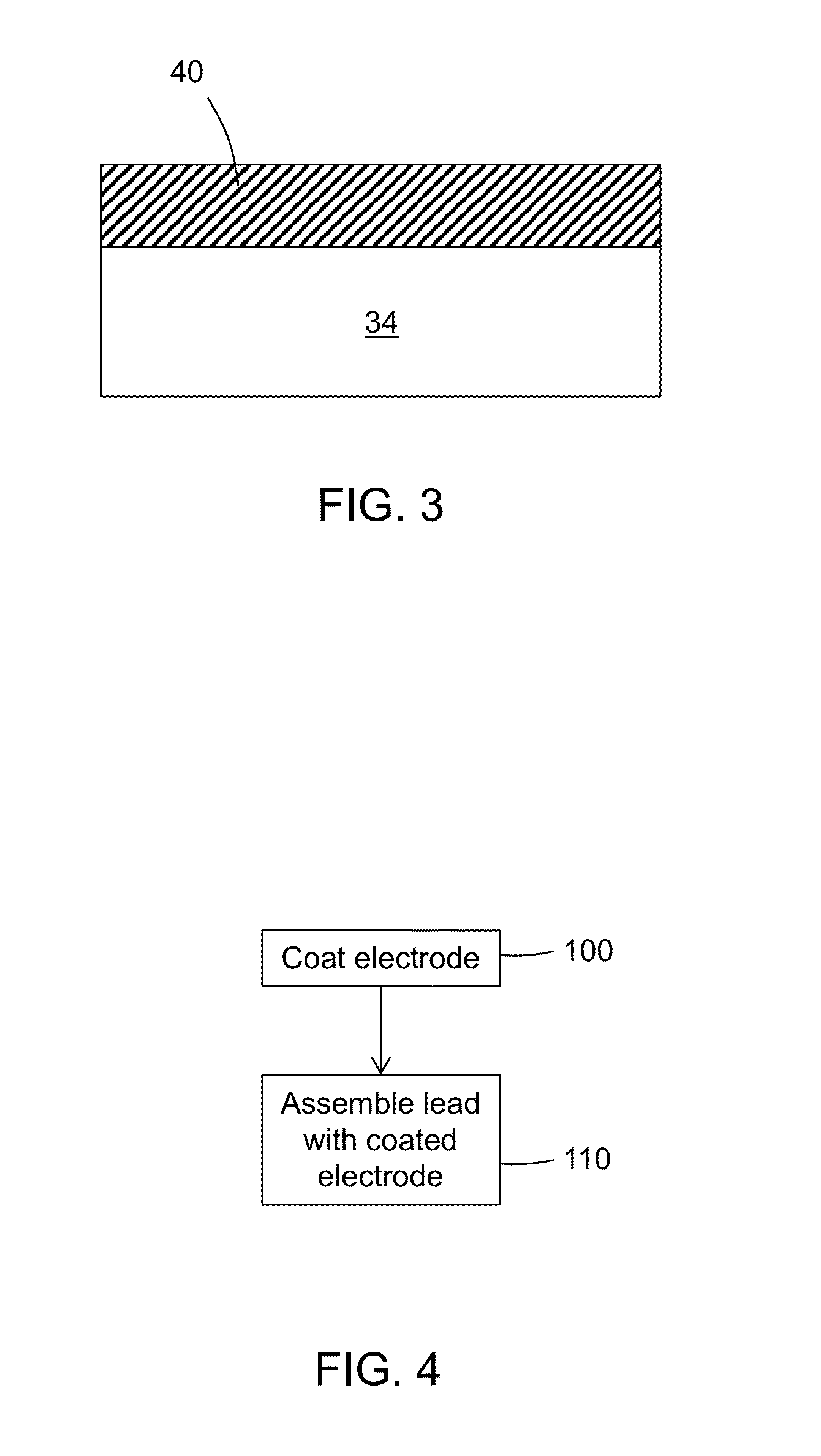Drug-eluting polymer coated implantable electrode
a technology of drug-eluting polymer and implantable electrodes, which is applied in the direction of electrotherapy, connection, therapy, etc., can solve the problems of difficult coating uniformity, high cost of coating testing, and difficult coating process
- Summary
- Abstract
- Description
- Claims
- Application Information
AI Technical Summary
Benefits of technology
Problems solved by technology
Method used
Image
Examples
example 1
Coating Composition and Process
[0079]Titanium Nitride helix tip electrodes of Medtronic, Inc.'s SELECT-SECURE Model 3830 leads were coated as follows.
[0080]For BDP alone, BDP was dissolved in isopropyl alcohol to generate a saturated BDP solution. The saturated BDP solution was applied to the helix tip electrode of an assembled Model 3830 lead, and the isopropyl alcohol was allowed to evaporate. Alternatively, an approximate 0.2% BDP solution was prepared in acetone. The solution was then transferred to a syringe. Using Electro-Nano-Spray (ENS) process, the solution was forced into a nozzle and under pressure accelerated into an electrical field. In this electrical field, the solution was dispersed into droplets due to the their repulsive charges and the charges droplets were deposited on to the target (helix electrode).
[0081]For BDP-PTMC, a 20% BDP / 80% PTMC composition was prepared as follows. Briefly, appropriate amounts of BDP and PTMC were dissolved in solvent (DCM / IPA=3:1 ratio...
example 2
Elution Profile
[0087]Elution of BDP from electrodes coated as described in Example 1 above was evaluated as follows. Briefly, the coated electrodes were placed in a solution of phosphate buffered saline (PBS) with 5% sodium dodecyl sulfate (SDS), pH 7, at 37° C. for two weeks. At two, four, eight, 13, 48, 72, 169 and 336 hours after incubation of the coated electrode in the PBS / SDS, a 10 microliter aliquot was sampled and evaluated for BDP by using high performance liquid chromatography (HPLC) procedures. The elution profiles are depicted in FIG. 5 for electrodes coated with BDP-PLGA, BDP-PTMS and BDP-Biolinx® in terms of cumulative percent of BDP eluted over time.
[0088]As an alternative, electrodes coated with BDP-alone, BDP-PLGA, BDP-PTMC, or BDP-Biolinx® were placed in a 50 / 50 (v / v) methanol / water solution at room temperature for one week. At 0.24, 2, 4, 8, 24, 48, 96, and 168 hours aliquots were sampled and evaluated for BDP as described above. Elution profiles are depicted in F...
example 3
Electrical Properties
[0094]Electrical impedance as a function of time in saline solution and the impedance-frequency scans of coated helix tip electrodes of Medtronic Model 3830 leads, which tip electrodes were coated as described above in Example 1, were tested in vitro. Briefly, the unipolar impedance of the coated electrode was measured between the coated electrode and the indifferent electrode in a salt solution tank at controlled temperature. The measurement was taken at the initial soak point and after approximately one, four and 24 hours. The impedance-frequency scans were carried over the frequency ranges from 0.1 Hz to 10,000 Hz in the saline solution tank.
[0095]Results are presented in FIGS. 7-8. In FIG. 7, the resistance relative to soak time is displayed. In FIG. 8, impedance vs. frequency is shown.
[0096]As shown in FIGS. 7-8, the leads having the distal tip helix electrode coated with BDP-alone, either by dip coating or ENS coating, produced similar impedance values, wh...
PUM
| Property | Measurement | Unit |
|---|---|---|
| weight percent | aaaaa | aaaaa |
| weight percent | aaaaa | aaaaa |
| weight percent | aaaaa | aaaaa |
Abstract
Description
Claims
Application Information
 Login to View More
Login to View More - R&D
- Intellectual Property
- Life Sciences
- Materials
- Tech Scout
- Unparalleled Data Quality
- Higher Quality Content
- 60% Fewer Hallucinations
Browse by: Latest US Patents, China's latest patents, Technical Efficacy Thesaurus, Application Domain, Technology Topic, Popular Technical Reports.
© 2025 PatSnap. All rights reserved.Legal|Privacy policy|Modern Slavery Act Transparency Statement|Sitemap|About US| Contact US: help@patsnap.com



